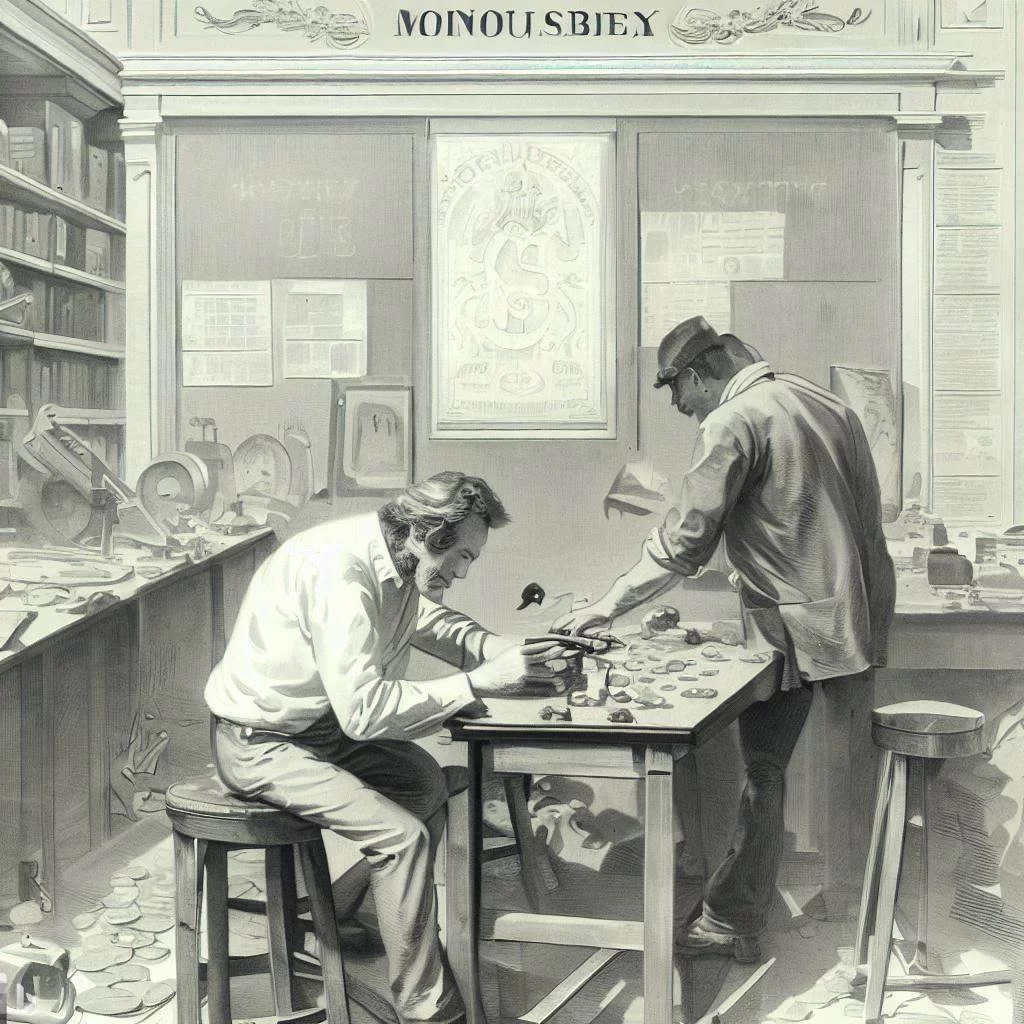Lucien Bazor, who was trained by his father Albert Bazor, became a famous engraver. He studied under the 22nd Chief Engraver of Coins, Jules Patey, before taking his place as the 23rd Chief Engraver of Coins in 1930.
Lucien Bazor is responsible for the creation of a wide variety of coins, which he signed under different names such as L. Bazor (Lucien), G.B. Bazor (George Bernard) or sometimes G.B.L. Bazor (Georges Bernard Lucien). He won the Grand Prix de Rome for medal engraving in 1923. Bazor created numerous types of coins, including the famous 100 francs Bazor and the 5 francs in nickel, also known as “la Bedoucette” in tribute to the Minister of Finance at the time, Albert Bedouce. During the Vichy period, he engraved several coins, including the 1 franc of 1942 and 1943-1944, the 2 francs of 1943-1944 with the Francisque symbol, as well as the 5 francs Pétain in nickel which was never put into circulation due to the requisition of its strategic metal. After the war, he created numerous colonial coins for various countries. Bazor held the position of Chief Engraver of Coins until 1958.
Main coin production:
The gold 100 francs coin, engraved by Lucien Bazor and dated 1935 and 1937, is struck with a weight of 6.55 g and a module similar to the previous 20 francs gold coin. Although 14 million coins were minted, they were not put into circulation due to the economic crisis and were melted down. Very few examples have been preserved, making it an extremely rare coin.
The “Bazor” 5 francs coin (1933), also called “la Bedoucette” in reference to the Minister of Finance at the time, Albert Bedouce, is a notable creation of Lucien Bazor as an engraver. This coin, considered rushed, is made of nickel and measures 23.7 mm in diameter with a reeded edge. Despite the minting of 100 million coins, half of them were never put into circulation due to the Mint’s decision to choose the Lavrillier type in August 1933. The Bazor 5 francs coin was only withdrawn from circulation in 1937 and was heavily melted down. According to numismatist Victor Gadoury, only 100,000 to 150,000 examples have survived. It is known today as the “Bazor type” in numismatics.
French colonial coins:
- French Equatorial Africa: aluminum 1 and 2 francs CFA 1948
- French West Africa: aluminum 1 and 2 francs 1948, 1955, 5, 10 francs 1956, 10, 25 francs 1957
- Cambodia: 10, 20 and 50 cents 1953, 1959
- French Somaliland: 1, 2, 5, 10, 20 francs 1948, 1949
- Laos: 10, 20 50 cents 1952
- Madagascar: 1, 2, 5 francs 1948, 1958, 10, 20 francs 1953
- New Caledonia: 50 cents, 1, 2 francs 1949, 5 francs 1952
- French Oceania establishments then French Polynesia: 50 cents, 1, 2, 5 francs 1949, 1952 – still in use today
- Reunion: 1, 2, 5 francs 1948, 10, 20 francs 1955
- Saint Pierre and Miquelon: 1, 2 francs 1948 Tunisia: 100 francs 1930
- Vietnam: 10, 20, 50 su 1953

Lucien Bazor, 1889 – 1974.

Leave a Reply